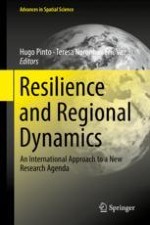2018 | OriginalPaper | Buchkapitel
2. Evolutionary Complexity Geography and the Future of Regional Innovation and Growth Policies
verfasst von : Philip Cooke
Erschienen in: Resilience and Regional Dynamics
Aktivieren Sie unsere intelligente Suche, um passende Fachinhalte oder Patente zu finden.
Wählen Sie Textabschnitte aus um mit Künstlicher Intelligenz passenden Patente zu finden. powered by
Markieren Sie Textabschnitte, um KI-gestützt weitere passende Inhalte zu finden. powered by
